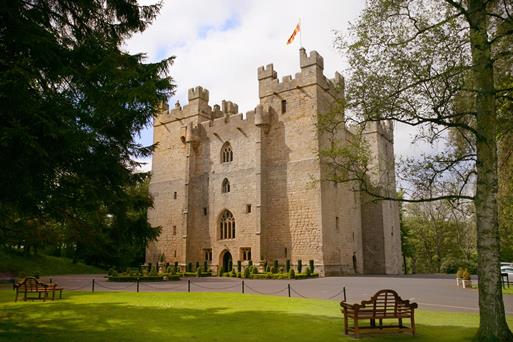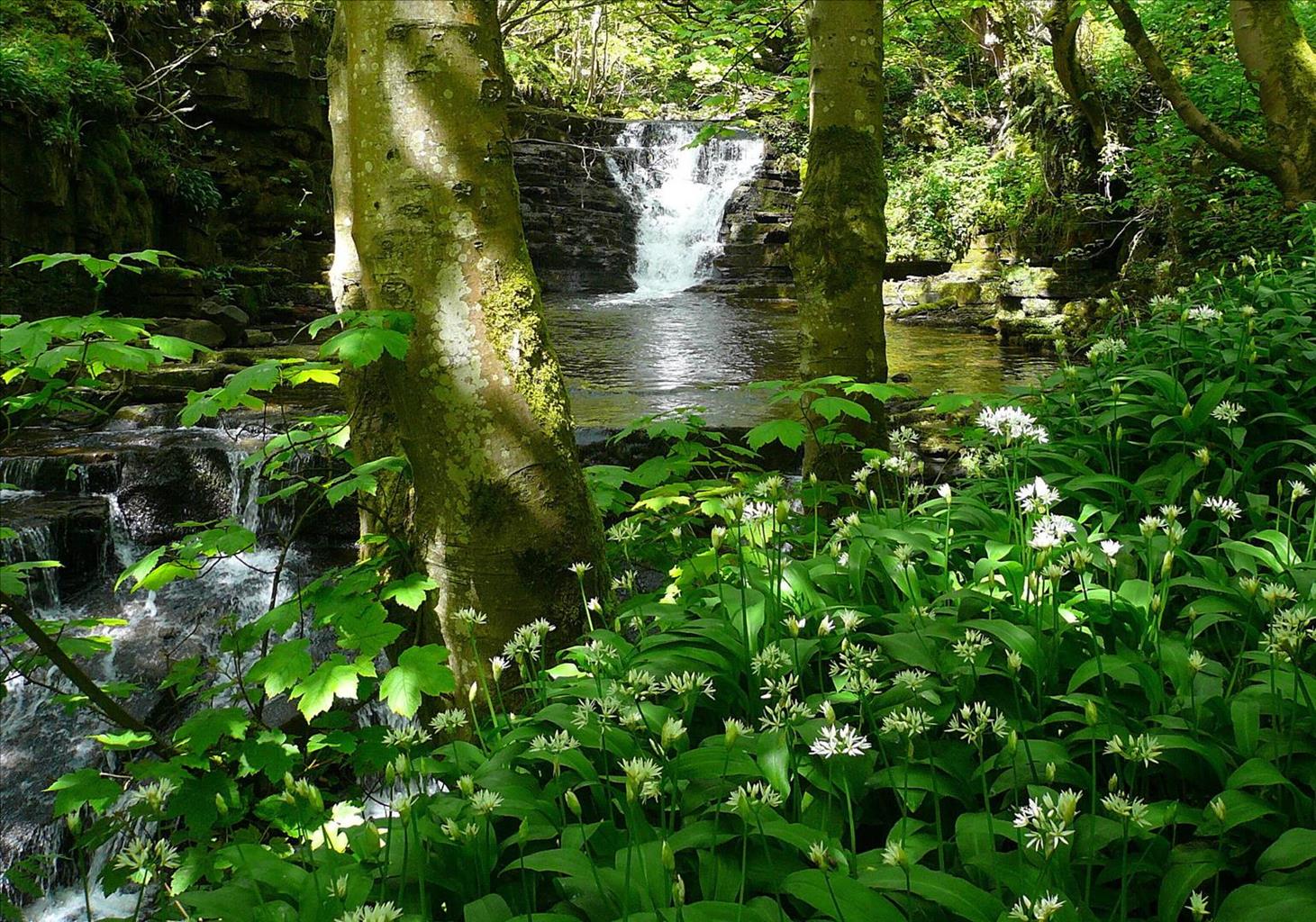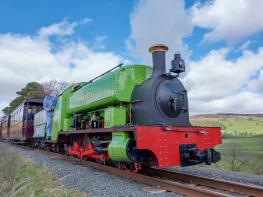Black Dog House is ideal for couples, groups of friends or families. It’s actually two 19th-…
Boltslaw Incline

6 miles (9.7kms)
About the walk
The stubby arch across the river and scant ruins by the lay-by at the start of the walk testify to Rookhope's lead mining history, but ironstone was equally important to the valley. It had been dug and smelted in the valley as early as Roman times, and in the 12th century the Crown granted mineral rights to the Bishops of Durham. Together with lead, iron ore was mined throughout the medieval period, finding its way into early iron and steel ventures such as the manufacture of swords at Shotley Bridge. But, the valley was remote and everything had to be carried out by packhorse, both curtailing the level of production and escalating the cost. It was only with the development of the railways during the middle of the 19th century that these limitations were overcome.
The ingredients for ironmaking
There were large ironstone deposits higher up the valley at Rispey, above Redburn and at Rookhopeburn Head. The latter had been worked from the middle of the 18th century by 'hushing', an opencast technique that used water to strip off the overlying debris to reveal the ore beneath. Limestone, a necessary ingredient in the smelting process, also outcropped in the valley. The problem was that the coal needed to fuel the process lay at Tow Law, further down the main Wear Valley and high above Wolsingham.
Arrival of the railway and a mineral incline
Blast furnaces were built at Tow Law, and in 1845 a rail link was built via Tow Law between the Stanhope and Tyne Railway, through Waskerley and the Stockton and Darlington line at Crook. A link to Rookhope quickly followed, an ambitious project taking the line across the top of the moors west from the junction at Waskerley. It ran for over 5 miles (8km) around the flank of Bolt's Law and Horseshoe Hill, above the head of Stanhope Burn. The summit of the line topped out at 1,670 feet (509m) and was the highest attained by any standard gauge railway in the country.
Like virtually all the other railways in the area, many sections were far too steep for normal operation and instead long inclines were laid, where the wagons would be disconnected from the locomotive and hauled up and down on ropes by powerful stationary steam engines. The descent into Rookhope was one such case, with the track falling 600 feet (183m) in just a mile (1.6km), and at one point having a 1 in 6 gradient. The engine house stood at the top of the incline and the buildings comprised both engine and boiler houses, as well as a gantry supporting the cable drums around which the rope was wound. The incline operated from 1846 until the closure of the Tow Law ironworks in 1923. The machinery was removed and the track taken up later during World War II for salvage.
Walk directions
Walk towards Rookhope, leaving at a stile on the right opposite the Blanchland road. Cross a footbridge and climb to a stile on the left from which a path follows the course of an old railway from the ironstone quarries at the head of the valley. Carry on past cottages, ultimately emerging in a yard by an auto-workshop. Go left across Rookhope Burn into the village.
Turn right to pass the Rookhope Inn. At the bend, leave left on a gravel track signed as NCR 7 to Waskerley. Keep right at successive forks, but after going through a gate, ignore a track off right and settle into a steady plod up the Boltslaw Incline.
Broaching the crest, carry on past the ruins of the winding and engine houses. Now level, the ongoing track emerges from a cutting to describe a gentle curve across the open moor. Keep going for 0.5 miles (800m) to approach a sprawling sheep fold to the right of the track.
There is no waymarker or obvious path, but, just before this, bear left off the track. Head north across the heather moor for 350yds (320m) to a stile in a fence that soon comes into view. Cross it and keep the same heading, following a shallow trough that leads to a junction of paths marked by a tall post another 600yds (549m) further on.
Turn sharp left and follow an obvious path which climbs to the top of the hill where, through a gate, the trig column stands just to the right. The onward path continues ahead, gently losing height across the moor. After nearly 0.75 miles (1.2km), pass through a gate. Just beyond, a quad track joins from the left. The temptation is to follow, but where it almost immediately bends right, keep ahead to pick up a shallow groove across the trackless heather and moss. Maintain your line for another 0.5 miles (800m) to emerge onto a lane above the head of Stogel Cleugh.
Walk downhill to the left. After 0.5 miles (800m) at a sharp bend, leave ahead beside a signpost marking the Leadmining Trail. The path quickly fades, but keep forward, dropping past a lone waymarker to rejoin the lane lower down at another bend. Continue downhill to a junction at the bottom of the hill. Turn right, back to the lay-by.
Additional information
Good tracks but pathless moorland, 8 stiles
Open moorland hill with relics of industrial past
Dogs should be under control and on leads across grouse moor
OS Explorer 307 Consett & Derwent Reservoir
Large lay-by beside Rookhope Arch, west of village
In Rookhope
WALKING IN SAFETY
Read our tips to look after yourself and the environment when following this walk.
Find out more
Also in the area
About the area
Discover Durham
If the Prince-Bishops of Durham had set out to make their cathedral the greatest tourist attraction in the northeast, they could not have done better. In a sense, that is exactly what they did set out to do. For some five centuries, until the Protestant Reformation, pilgrimages were big business. The bones of St Cuthbert and the skull of St Oswald attracted the halt (disabled), the lame and the old to Durham in the hope of a miraculous healing.
The cathedral and the castle were what Durham was all about, from the early Middle Ages onwards, but even without these landmarks the city of Durham would be spectacular. From whichever side you approach, Durham is a magnificent sight. It’s a city that needs to be explored the hard way – on foot.
Nearby stays
Restaurants and Pubs
Nearby experiences
Recommended things to do
Why choose Rated Trips?
Your trusted guide to rated places across the UK
The best coverage
Discover more than 15,000 professionally rated places to stay, eat and visit from across the UK and Ireland.
Quality assured
Choose a place to stay safe in the knowledge that it has been expertly assessed by trained assessors.
Plan your next trip
Search by location or the type of place you're visiting to find your next ideal holiday experience.
Travel inspiration
Read our articles, city guides and recommended things to do for inspiration. We're here to help you explore the UK.













